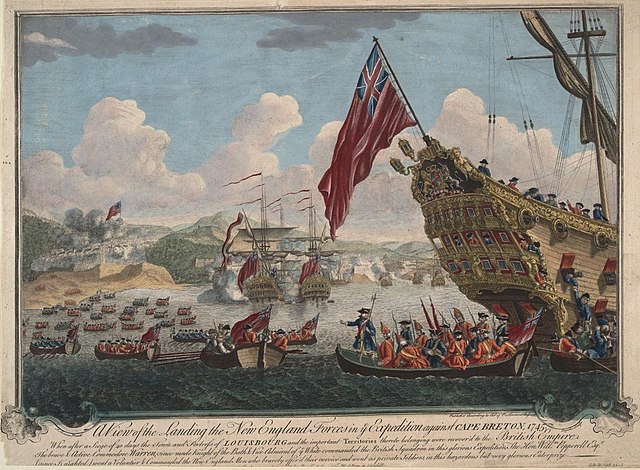The Fortress of Louisbourg is a tourist attraction as a National Historic Site and the location of a one-quarter partial reconstruction of an 18th-century French fortress at Louisbourg on Cape Breton Island, Nova Scotia. Its two sieges, especially that of 1758, were turning points in the Anglo-French struggle for what today is Canada.
Diorama of the Fortress of Louisbourg in 1758
Colored engraving depicting the Siege of Louisbourg
The Louisbourg Cross, on permanent loan to the fortress since 1995
The Government of Canada rebuilt one-fifth of the town, and its fortifications; the multi-year work commenced in 1963.
National Historic Sites of Canada
National Historic Sites of Canada are places that have been designated by the federal Minister of the Environment on the advice of the Historic Sites and Monuments Board of Canada (HSMBC), as being of national historic significance. Parks Canada, a federal agency, manages the National Historic Sites program. As of November 2023, there were 1,005 National Historic Sites, 171 of which are administered by Parks Canada; the remainder are administered or owned by other levels of government or private entities. The sites are located across all ten provinces and three territories, with two sites located in France.
The celebrations of Quebec City's tricentennial in 1908 acted as a catalyst for federal efforts to designate and preserve historic sites.
Prince of Wales Fort in Churchill, Manitoba was one of the first two sites designated in Western Canada.
The initial focus of the program was strictly on commemoration rather than preservation or restoration. The ruins of the Fortress of Louisbourg were designated in 1920, but efforts to restore the fortress did not commence until 1961.
The historic district of Westmount, Quebec was designated in 2011 in recognition of the efforts of local citizens who had worked for decades to protect the district's historic built environment.








